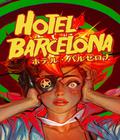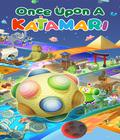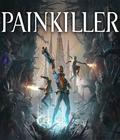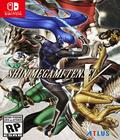I love the Persona series. The games are among some of my favorite JRPGs, but my favorite entries aren't the flashy, poppy JRPGs but the granddaddy of them all: the original Shin Megami Tensei games. Half-dungeon crawler and half-proto-Pokémon, they've had engaging settings and interesting worlds. Shin Megami Tensei V has been a long time coming, but thankfully, it continues to live up to the series' strong reputation. It might not be as plot-heavy as a Persona title, but it's sure a lot of fun.
As is standard for the franchise, Shin Megami Tensei V opens in Tokyo. You play as a regular schoolboy, but on your way home one day, you're caught in a collapsing underpass. You awaken in Da'at, a netherworld where demons roam the land and Tokyo appears to be in ruins. The demons almost kill the protagonist before Aogami, a robot-like man, appears. He fuses with the protagonist and turns them into a Nahobino, a legendary being with the power to guide the fate of the world.
The neat thing about SMT5 is that it's set after the apocalypse. The eternal battle between YHWH and Lucifer has ended, and everyone is rushing to pick up the pieces. (Don't worry, this isn't a spoiler; you find it out very early in the game.) This works to the game's credit, as it takes the focus off The Creator in a way that none of the previous games have manage to do. The presence of the traditional leaders of Law and Chaos is still felt, but they are significantly less present in this story than in prior offerings. That doesn't stop the game from repeating some of the more common tropes of the franchise, but it focuses them in new directions.
The Chaos paths in SMT5 are the most sensible that the series has seen. It's rare for Chaos to be written as anything but "survival of the fittest," but SMT5 focuses on the idea of seeking freedom or diversity. When deciding which path I liked best, I was pleasantly surprised to realize that there wasn't one obvious choice. Sadly, Law continues to be limited in appeal, and the game presents it as cartoonishly malicious.
SMT5's story feels like it's missing a chapter. The plot skips a beat after the second area in a way that makes the next segment feel rushed. The game could've used more plot time with the characters, as some feel under-developed. It doesn't need to be intricate like Persona, but it needs more meat on its bones, especially since a lot of the characters and plots don't get resolved unless you complete side-quests.
SMT5 returns to the Press Turn System that the series has been using for some time. In essence, combat is a turn-based affair, with each side taking turns. Each side has a number of Turns, which are determined by how many characters are on their side of the field. Attacking, healing, using an item, or guarding uses one Turn, and once you run out, your turn ends. If you hit an enemy weakness or perform a critical hit, you'll only use a half-turn. If your attack is dodged, blocked, nullified or repelled, you can lose multiple Press Turns or even the rest of your turn!
Basically, the game is about giving yourself as many turns as possible while denying the enemy the same. Turns function the same way for both sides, so you can cause enemies to lose precious turns. The game makes this easier with new taunt skills that encourage enemies to attack certain targets.
New to SMT5 is the Magatsuhi skill. You have a bar that fills up as you take actions in combat, and when it is full, you can use a Magatsuhi skill. Your default skill turns all attacks for the rest of the turn into critical hits, but each Demon Race has its own unique Magatsuhi skill. Some can perform powerful unblockable attacks, others can heal your entire party, double the experience points you get from a fight, or change the amount of MP it takes to use skills. You unlock more as the game progresses, and some are incredibly powerful. The default "criticals for an entire turn for your party" is so absurdly powerful that it isn't worth using anything less. I used a handful of other skills throughout the game, since almost none were worth giving up extra damage and free turns. The ones that were worthy came very late in the game and were game-breakingly powerful.
Your protagonist in SMT5 functions very much like the Demi-Fiend from Nocturne. Rather than being a human being, you function as a powerful demon, but there are some changes that give you a leg up. The Magatama system is replaced by Essences, which function like the Sources in Strange Journey. As long as you have a demon essence, you can give any skill to your protagonist and change their elemental affinities to match. This gives you a lot of flexibility and makes it easy to adjust your defenses to match a troublesome boss. You also can learn Miracles, which are passive bonuses that can get you more demon space or let you bully demons into giving free items.
Likewise, you're not quite as pigeonholed into a single build as you are in Nocturne. As in most games, your protagonist gains a point to spend in their stats as they level up. Even if you don't invest in a stat, the game adds bonus stats as you level up. You can end up with reasonable magic even if you invest entirely in strength and vice versa. The majority of the Nahobino's best skills are strength-based, so you'll probably end up building in that direction.
As is standard for the SMT titles, your party is comprised of recruited demons. Each demon has stats, skills and elemental defenses that you can mix and match, and you can also fuse demons into new forms. It's all standard for the franchise, and if you've ever played a SMT game, you have an idea of what to expect.
Perhaps the coolest new feature are Unique Skills, which are special skills that a specific demon can use. For example, Jack Frost gets the Jack Bufula, which does strong ice damage and debuffs enemy defenses. Since these skills are exclusive to a specific demon, choosing your demons requires more thought, since you may give up valuable skills by upgrading. Even your protagonist has unique skills they can learn, including support, ailment and combat skills.
SMT5 keeps the "rocket tag" design of SMT4, despite the return of the Vitality stat. Damage numbers are high on both sides, and enemies can wipe out multiple members of your team in a single attack round. It seems that the game expects you to keep a large stable of demons — you can have up to 25 — and swap them in or out, even mid-battle. It strongly encourages you to min-max your demons for the greatest effectiveness. Elemental protection has been severely scaled back, with less in terms of full Nullifications or Repels and less coverage overall. You can create super tanky demons, but you have to devote a lot of their skill space to it.
SMT5 has made min-maxing the easiest it's ever been in the series, so there are tons of ways to level up. Mitama, the game's versions of Metal Slimes, are omnipresent and often yield great XP in addition to rare items. You'll be swimming in Grimoires and Incenses, which give free levels and stats. Essences allow you to transfer skills to a summoned demon, making it trivial to create powerful skill combinations. Demons don't seem to suffer as much from being "lower-tier" as long as you boost their stats a bit. I took a level-40 demon to the endgame, and he was my top damage dealer by far.
SMT5 runs into the same problem that SMT4 ran into, so if you get ahead of the curve on rocket tag, you will be face-stomping enemies. By the endgame, I cleared boss encounters in about two rounds of combat. Enemies can still deal boatloads of damage, but it becomes harder for them to do when they're debuffed into irrelevance. If you know how to build, the game gets pretty easy beyond a certain point.
The core level design in SMT5 is wildly different from the previous games. Rather than an overworld and a series of dungeons, you have four large areas that are effectively huge dungeons. You'll have to locate hidden paths to find rare items, secret bosses, or hidden creatures. I had a lot of fun exploring the dense areas, which contain many side-quests and neat features. Rather than feeling pushed around, I had a nice sense of freedom. The Abscesses basically serve the same role as towers in a Ubisoft game by blocking out the overworld map until you find them. It felt out of place and more of a nod to open-world design rather than something naturally integrated into the game.
SMT5 doesn't have much in the way of dungeons. The overworld functions as a large open dungeon for each area, with the central focus being exploration and getting from point A to point B. There are a number of more traditional dungeons, but they're so few and far between that I was 20 hours into the game before I encountered what I'd consider to be a "real" dungeon, and that was the last one I saw for another 20 hours. There are perhaps three in the whole game, and at least one is incredibly short. If you're a fan of the franchise's myriad dungeons, you might be disappointed. It's like Breath of the Wild in that it sacrifices the predesigned dungeons for a larger overworld.
Overall, SMT5 is a great step forward in a lot of ways. It's fun to play, fun to explore, and it makes the franchise feel more distinct from the Persona games in tone and gameplay. I wish the story were less rushed, but there's a fair bit of game here. Finishing the main story and most of the side-quests took me almost 40 hours, but there are multiple endings to discover, and I probably missed some cool secrets. You'll have plenty of fun with the game if it sinks its hooks into you.
For the most part, SMT5 looks good. The character models and animations are solid, and the art design is strong. The overworld can sometimes look a bit too repetitive, and some spots have awful textures. It doesn't look as good as Persona 5 but carries itself on strong art design. The soundtrack is incredibly good. It seemed a bit cold at first, but as you get further into the game, the excellent tracks do wonders for setting the mood. The English dub is quite engaging and sells characters who only have a handful of lines.
Shin Megami Tensei V is pretty much the sequel that fans have been waiting for. There are a few potentially controversial decisions, such as the emphasis on an open-world area instead of the franchise classic dungeons, but they ended up working out in the end. The gameplay was fun from start to finish, and the 40-hour runtime seemed to fly by thanks to excellent pacing. If you liked Nocturne but wished it were more modern, SMT5 is the game you've been waiting for.
Score: 9.0/10
More articles about Shin Megami Tensei V











 Shin Megami Tensei V is set in modern Tokyo. Players face a new onslaught of demons in the latest entry from the RPG series.
Shin Megami Tensei V is set in modern Tokyo. Players face a new onslaught of demons in the latest entry from the RPG series.










































